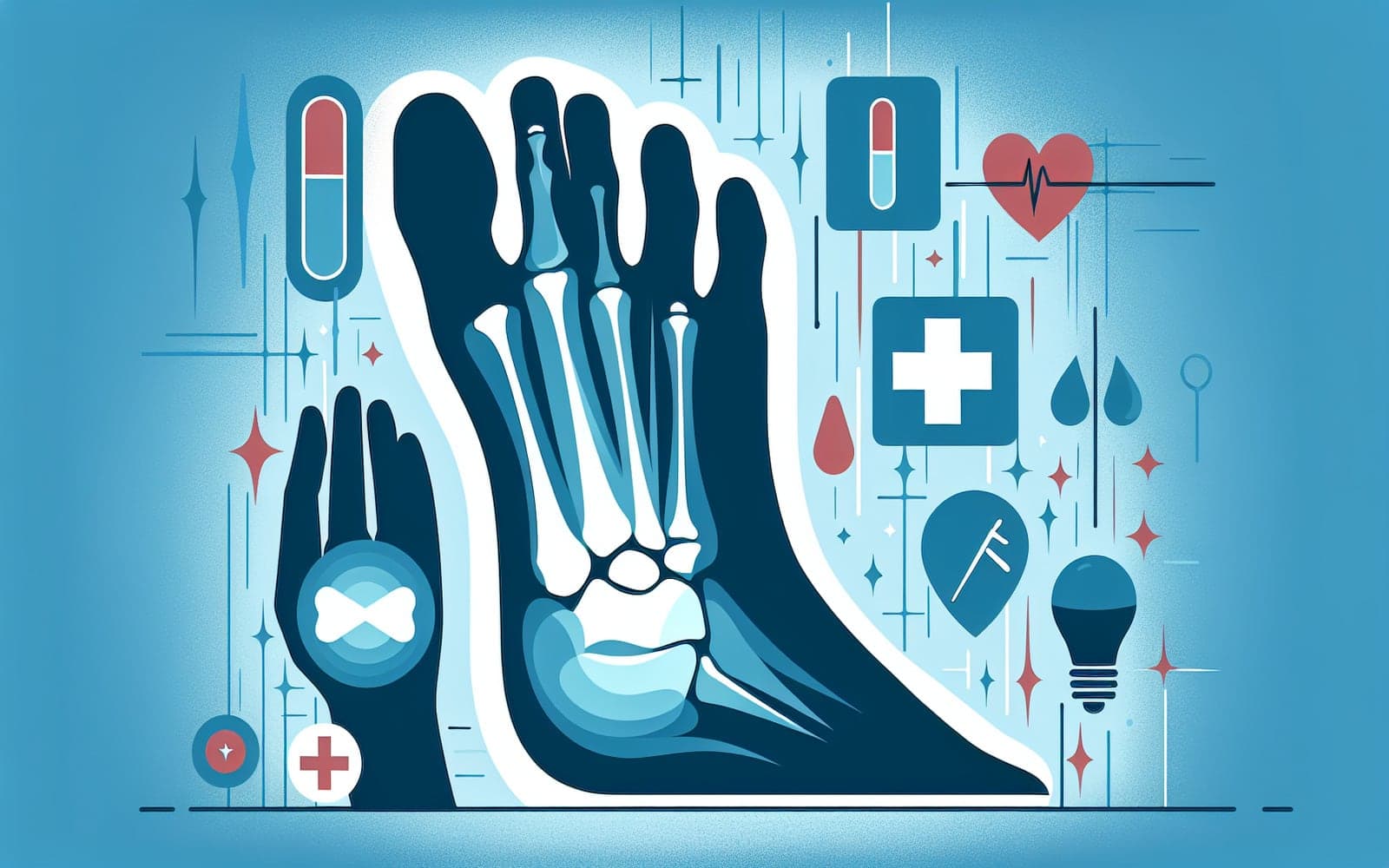Cracked Toe? 5 Key Signs You Might Have a Fracture
Published: Sep 26, 2024
Toe fractures can be painful and disruptive, but recognizing the symptoms early can lead to faster treatment and better outcomes. Here are the key signs that your toe might be broken.
Contents
Pain and Swelling: The First Red Flags
The most immediate and obvious symptoms of a toe fracture are pain and swelling. The pain is usually sharp and intense, especially when you try to put weight on the affected foot. Swelling typically develops within hours of the injury and can make your toe appear larger than normal. These symptoms alone don't confirm a fracture, but they're strong indicators that you should seek medical attention.
Bruising and Discoloration
Bruising is another common sign of a toe fracture. You may notice purple or bluish discoloration around the injured area, which can spread to surrounding toes or the foot. In some cases, especially with fractures of the big toe, you might see blood collecting under the toenail, forming a dark, purplish spot called a subungual hematoma.

Deformity and Difficulty Moving
A broken toe may appear crooked or out of alignment compared to your other toes. This is especially noticeable in displaced fractures, where the bone ends no longer line up correctly. You might also find it difficult or painful to move the injured toe. In some cases, you may be unable to move it at all.
Frequently Asked Questions
While it may heal, improper healing can lead to long-term problems.
Pain and swelling can persist for several weeks during healing.
Limited walking is often possible, but can be painful and may slow healing.
Not always; some fractures have subtle symptoms.
Key Takeaways
While these symptoms strongly suggest a toe fracture, only a medical professional can provide a definitive diagnosis.
If you're experiencing these symptoms, don't wait - consult with Doctronic to get a proper diagnosis and treatment plan.Related Articles
References
Hatch RL, Hacking S. Evaluation and management of toe fractures. Am Fam Physician 2003; 68:2413.
Van Vliet-Koppert ST, Cakir H, Van Lieshout EM, et al. Demographics and functional outcome of toe fractures. J Foot Ankle Surg 2011; 50:307.
Always discuss health information with your healthcare provider.

